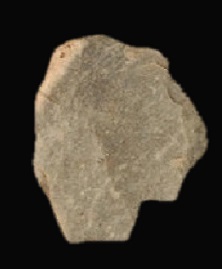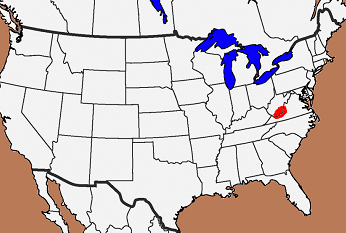

Greenbrier chert is associated with the Greenbrier Formation of southwestern Virginia, and eastern West Virginia. Outcrops occur as nodules in the lower 40 feet of the formation with exposure occurring from the Cumberland gap northeast to the Powell Valley anticline and the Little Stone Gap.
The Greenbrier Formation of West Virginia is similar, but not the same as, the Greenbrier Formation of Maryland. Both are a marine carbonate, but they are not the same formation.
